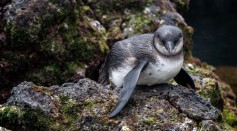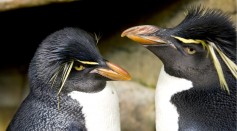penguins

The Galapagos Sees Record Increase in Its Endemic Penguins and Cormorants
Fire in the Hole! Penguins Can Shoot Their Poop Cannons with a Trajectory of Over Four Feet

[VIDEO] Penguins Take Advantage of Human Absence, Roam Freely Around Aquarium
Genes Show Where Penguins Called Home During the Ice Age
Life in The Cold—How Penguins Deal Without Sweet & Savory Sensations
Why Researchers Have to Go In Disguise—The Penguin in the Room
Penguin-Friendly Rover Finds Its Place Amongst the Crowd
Most Popular

How Technology Is Changing the Real Estate Industry?

How a Plant-Based Diet Can Protect Against Breast Cancer: Insights from Nutrition Research

Study Reveals High Turnover in Scientific Research Careers: What This Means for Future Scientists

Nikolay Karpenko Biography, Photo, Career, Accomplishments





